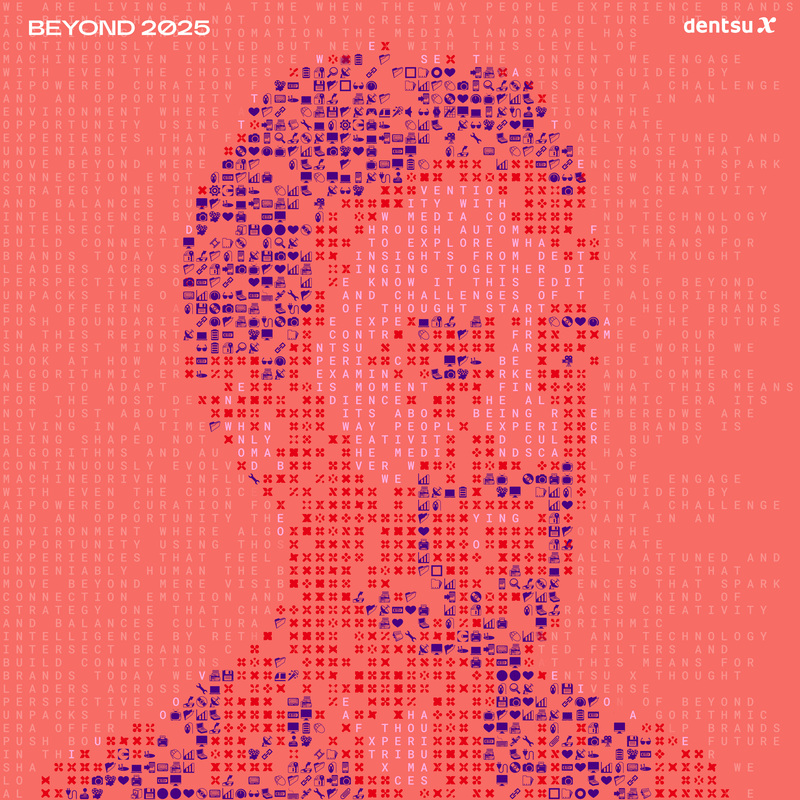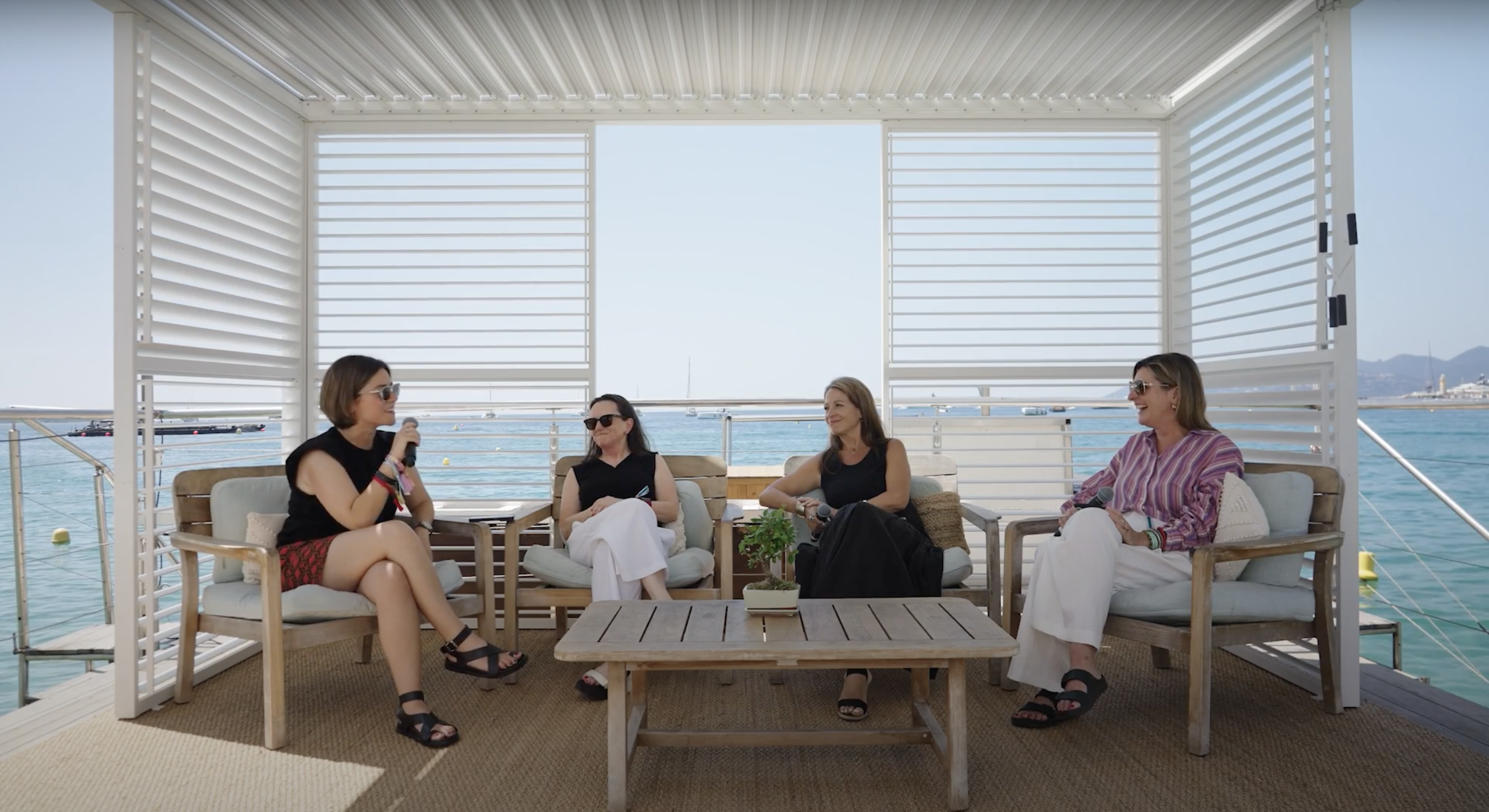The screen wars are over. Not because one platform won, but because the battlefield itself has disappeared. Ofcom's Media Nations Report 2025 reveals something extraordinary: while we were all watching Netflix versus linear TV, YouTube versus traditional broadcasting, something far more profound was happening. The entire concept of competing platforms has dissolved into something new, the Experience Economy.
In this new reality, YouTube isn't a competitor to television. It is television. Netflix isn't disrupting broadcasters. It's becoming part of the same ecosystem. And brands? They're no longer choosing between channels. They're designing experiences that flow seamlessly across every screen, every moment, every context.
Welcome to the post-platform world, where experience design has become the new creative currency.
The Death of Platform Thinking
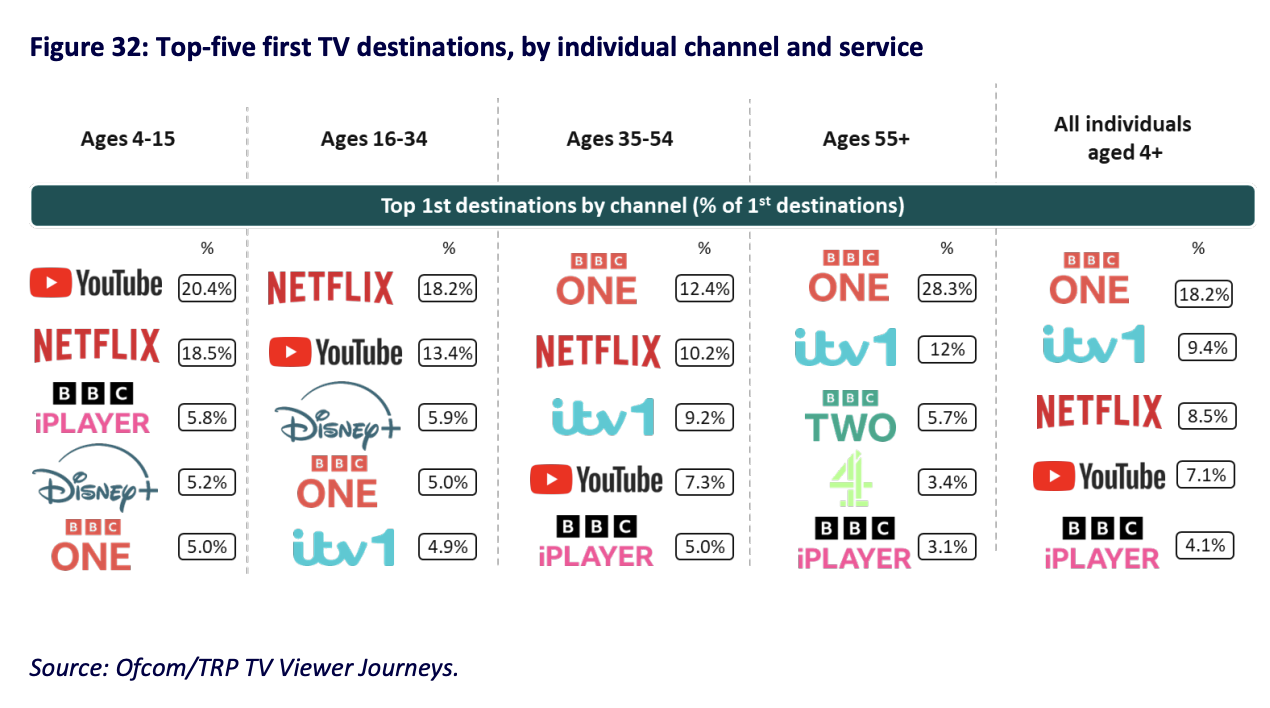
Ofcom's 2025 data tells the story of boundaries dissolving in real-time. YouTube has become the most popular first destination for children aged 4-15 when they turn on the TV, capturing 20.4% of all TV journeys.
This children-driven growth is reshaping the entire viewing landscape – kids aged 4-15 are the age group most likely to watch YouTube on TV sets, with 50% of their YouTube viewing (in 2024) happening on television (up from 45% in 2023. But here's what makes this revolutionary: these children don't see YouTube and BBC One as different things. They're all just "stuff to watch."
The proportion of YouTube viewing happening on TV sets jumped from 34% to 41% between 2023 and 2024, driven primarily by children’s viewing habits. During that same period, 16-34s, TV-based YouTube viewing increased by 47% reaching 21 minutes daily, and total in-home YouTube viewing grew from 35 to 39 minutes daily. But these aren't migration statistics - they're convergence metrics. People aren't leaving TV for YouTube. They're creating unified entertainment experiences that transcend platform boundaries.
This is the Experience Economy in action: where success isn't measured by platform market share, but by depth of human engagement across all touchpoints.
The New Creative Physics of Experience Design
From Content to Context
In the Experience Economy, content is just the raw material. The real value lies in context - how, when, where, and why people engage with your brand story.
Consider the viewing behaviour patterns Ofcom uncovered:
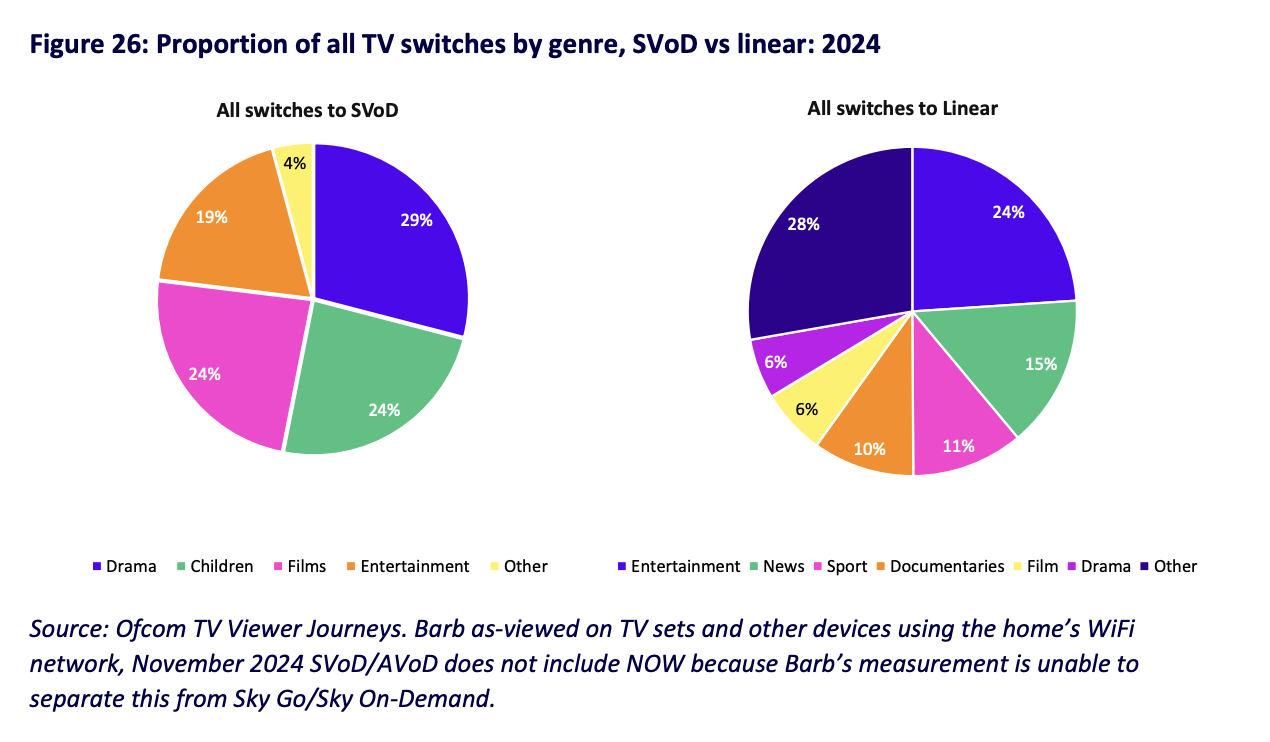
- Just four genres (drama, films, entertainment, and children's programming) account for 96% of switches to streaming platforms
- Linear TV serves broader behavioural needs: news (15% of switches), sport (11%), documentaries (6%)
This isn't audience preference data, it's experience architecture. People don't choose platforms; they choose experiences. And those experiences happen to be delivered through different technological pipes.
The Algorithm as Experience Designer
According to Enders Analysis, half of YouTube's top trending videos now resemble traditional TV content. But they're not TV programmes uploaded to YouTube, they're YouTube-native experiences that happen to feel like television.
This reveals the new creative challenge: designing experiences that satisfy both algorithmic logic and human emotion, that work for solo phone scrolling and family TV watching, that adapt to context while maintaining narrative coherence.
The Experience Economy in Practice
Broadcaster Evolution Models
Channel 4's YouTube partnership didn't just distribute content; it created new experience territories. By publishing full programmes while retaining advertising control, they proved you could maintain creative integrity while designing for algorithmic discovery.
ITV's 2024 expansion went further, creating dedicated experience universes: ITV Entertainment, ITV Retro, ITV Real Life Stories. These aren't distribution channels - they're curated experience destinations that feel native to YouTube while maintaining ITV's creative DNA.
The BBC's podcast-to-visual adaptations represent the ultimate experience design: content that exists simultaneously as audio, video, linear broadcast, and on-demand experience, each optimised for different contexts and consumption modes.
The Smart Speaker Revolution
While everyone focused on video, the audio revolution accelerated quietly. 15-34-year-olds now spend over half their weekly listening time (58%) with streamed music and podcasts—almost double the average listener (30%).
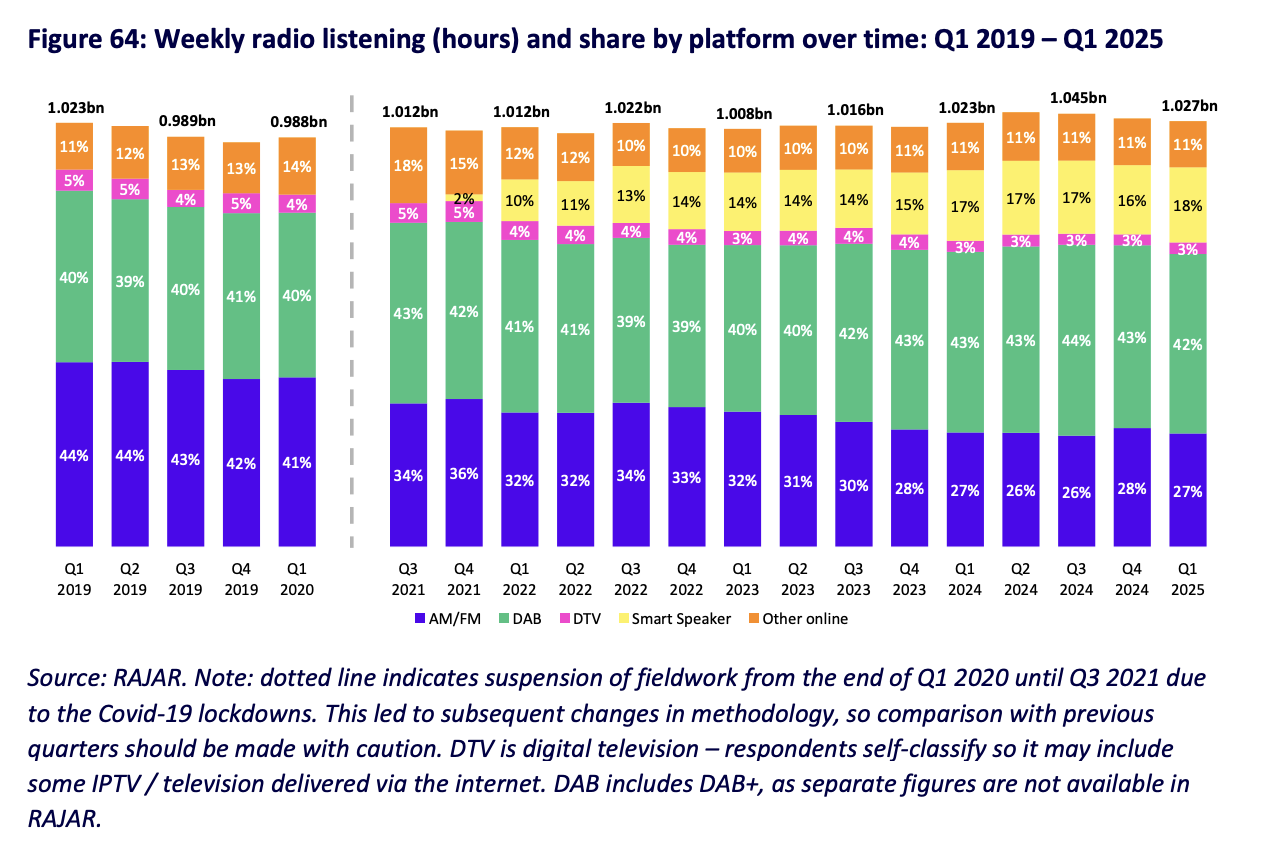
Smart speaker radio listening accounts for 18% of total listening, up 6 percentage points in three years. This isn't just platform growth—it's the emergence of voice-activated experience design, where brands can create ambient, contextual interactions that feel natural rather than intrusive.
Experience Design Principles for the New Economy
1. Contextual Fluidity
Experiences must adapt seamlessly to viewing context without losing essential character. Among 16-34s, TV-based YouTube viewing increased 47% in one year, reaching 21 minutes daily. These aren't passive viewers migrating to bigger screens—they're actively curating communal experiences from originally personal content.
Design Principle: Create experiences that enhance rather than compromise when transitioning between intimate and communal contexts.
2. Algorithmic Empathy
The most successful content in the Experience Economy satisfies both human emotion and algorithmic logic. This requires understanding how recommendation systems work while never sacrificing authentic human connection.
Design Principle: Design for discovery systems while creating for human hearts.
3. Elastic Storytelling
Short videos remain YouTube's most popular format (59% of video consumption is for videos up to 15 minutes), but growth is shifting toward premium, long-form content. The creative challenge isn't choosing a length; it's creating stories that work at any length.
Design Principle: Build narrative structures that can expand and contract while maintaining emotional impact.
The Future Experience Formats
Ambient Brand Presence
Instead of interrupting experiences, brands become part of the experiential fabric. Think less "advertising" and more "atmospheric enhancement" - brand presence that feels as natural as background music.
Contextual Commerce Integration
YouTube's commerce capabilities enable seamless shopping integration. But in the Experience Economy, this isn't about selling products, it's about completing experiences. The purchase becomes part of the story, not a disruption of it.
Community-Driven Narrative Universes
Brands as enablers of creator-led storytelling, where professional production values meet authentic creator voices to build sustained emotional communities rather than transactional audiences.
Cross-Reality Experience Continuity
Experiences that begin on one screen but naturally extend to others, creating continuous brand relationships that feel organic rather than forced across all touchpoints.
Designing for Human Moments, Not Media Moments
The Experience Economy recognises a fundamental truth: people don't live in media moments - they live in human moments that happen to involve media. The most powerful brand experiences integrate seamlessly into life's natural rhythms.
When adults want to watch something but don't have specific preferences:
- 43% now go to streaming services first
- 28% select TV channels first
- But 100% are seeking an experience that matches their current emotional state
This is the opportunity: designing experiences that respond to human need states rather than platform capabilities.
The Measurement Revolution
In the Experience Economy, traditional performance metrics become misleading. Reach and frequency matter less than emotional resonance and experiential depth.
New Experience Metrics:
- Contextual Engagement: How deeply people engage across different viewing contexts
- Experience Completion: Whether people finish the emotional journey you've designed
- Cross-Platform Continuity: How seamlessly experiences flow between touchpoints
- Community Formation: Whether experiences create lasting human connections
Five Key Takeaways for Navigating the Experience Economy
1. Children are the Architects of the New Media Landscape.
YouTube’s dominance as the first TV destination for 4-15-year-olds (20.4% of journeys) isn’t just a trend; it’s the blueprint for the future. These digital natives are creating the consumption patterns that all media will eventually follow.
2. Platform Wars Have Ended in Integration, Not Victory.
With 56% of viewing still going to broadcaster content despite SVoD growth, success lies not in defeating platforms but in designing experiences that flow seamlessly between them. The winners will be those who embrace convergence over competition.
3. Context Beats Content in the Experience Economy
While SVoD focuses on just four genres (drama, films, entertainment, and children's programming) for 96% of viewing, linear TV serves broader human needs – news, sport, and documentaries. Brands should design for life’s full emotional spectrum, not just entertainment moments.
4. Voice and Audio Are the Next Frontier for Experience Design
Smart speakers now account for 18% of radio listening, while 15-34-year-olds spend 58% of radio time with streaming. The opportunity lies in creating ambient, voice-activated brand experiences that feel natural rather than intrusive.
5. New Metrics for Measuring Success
Traditional reach and frequency become meaningless when experiences transcend platforms. Success requires measuring contextual engagement, experience completion, cross-platform continuity and community formation rather than simple viewership.
The dentsu X Advantage in the Experience Economy
At dentsu X, we've always believed in Experience Beyond. While others were fighting platform wars, we were building experience architectures. The convergence of Ofcom documents doesn't disrupt our approach; it validates our belief that the future belongs to those who design for human experience rather than media channels.
Our Experience Economy Capabilities:
- Contextual Experience Design: Creating brand stories that adapt fluidly across viewing contexts while maintaining emotional coherence.
- Algorithmic Experience Optimisation: Balancing recommendation system requirements with authentic human connection.
- Cross-Reality Experience Architecture: Building unified brand experiences that feel native to each platform while serving a coherent human journey.
The Post-Platform Opportunity
The screen wars taught us to think in terms of competition and disruption. The Experience Economy teaches us to think in terms of integration and enhancement. The biggest creative opportunities aren't in conquering platforms, they're in designing experiences that make platforms invisible.
When someone watches YouTube on their TV, they're not "using YouTube" or "watching TV." They're seeking entertainment, connection, distraction, and inspiration. The platform becomes invisible. Only the experience remains.
This is where the real creative work happens: in the space between technology and emotion, where human needs meet infinite possibility.
Explore the complete Ofcom Media Nations 2025 report and discover the data driving the Experience Economy transformation.
Photo by Glenn Carstens-Peters on Unsplash
